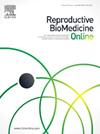Adenomyosis-associated infertility: an update of the immunological perspective
IF 3.7
2区 医学
Q1 OBSTETRICS & GYNECOLOGY
引用次数: 0
Abstract
Adenomyosis is characterized by the invasion of endometrial glands and stroma into the myometrium. Its clinical manifestations often include dysmenorrhoea, excessive menstrual bleeding and infertility. Reduced pregnancy and live birth rates and an increased miscarriage rate are observed in women with adenomyosis. This review summarizes relevant advances and presents the underlying mechanisms of adenomyosis-associated infertility from an immunological perspective. Individuals with adenomyosis exhibit imbalances in immune cell subpopulations and the endocrine hormone–immunomodulatory axis. These immunological alterations may be key contributors to, or at least accomplices in, impaired endometrial receptivity. In addition, adenomyosis often occurs in association with endometriosis, uterine leiomyoma or endometrial polyps, which are pathogenetically relevant; their similarities and differences are discussed from an immunological perspective. The clinical diagnostic criteria of adenomyosis are not perfect, and the pathogenesis remains to be fully explored. Therefore screening for effective targets for early diagnosis and treatment at the cellular and molecular levels from the immunological point of view holds great potential, which will be of great importance in preventing this disease and improving women's reproductive health.
腺肌病相关不孕症:免疫学观点的更新。
子宫腺肌症的特征是子宫内膜腺体和间质侵入子宫肌层。其临床表现多为痛经、经血过多、不孕症等。观察到患有子宫腺肌症的妇女怀孕率和活产率降低,流产率增加。本文综述了相关研究进展,并从免疫学角度介绍了腺肌病相关不孕症的发病机制。患有子宫腺肌症的个体在免疫细胞亚群和内分泌激素-免疫调节轴上表现出不平衡。这些免疫改变可能是子宫内膜容受性受损的关键因素,或至少是同谋。此外,子宫腺肌症常与子宫内膜异位症、子宫平滑肌瘤或子宫内膜息肉相关,与病理相关;从免疫学的角度讨论了它们的异同。子宫腺肌症的临床诊断标准尚不完善,发病机制尚待充分探讨。因此,从免疫学角度筛选细胞和分子水平的有效靶点进行早期诊断和治疗具有很大的潜力,这对预防该病和改善妇女生殖健康具有重要意义。
本文章由计算机程序翻译,如有差异,请以英文原文为准。
求助全文
约1分钟内获得全文
求助全文
来源期刊

Reproductive biomedicine online
医学-妇产科学
CiteScore
7.20
自引率
7.50%
发文量
391
审稿时长
50 days
期刊介绍:
Reproductive BioMedicine Online covers the formation, growth and differentiation of the human embryo. It is intended to bring to public attention new research on biological and clinical research on human reproduction and the human embryo including relevant studies on animals. It is published by a group of scientists and clinicians working in these fields of study. Its audience comprises researchers, clinicians, practitioners, academics and patients.
Context:
The period of human embryonic growth covered is between the formation of the primordial germ cells in the fetus until mid-pregnancy. High quality research on lower animals is included if it helps to clarify the human situation. Studies progressing to birth and later are published if they have a direct bearing on events in the earlier stages of pregnancy.
 求助内容:
求助内容: 应助结果提醒方式:
应助结果提醒方式:


